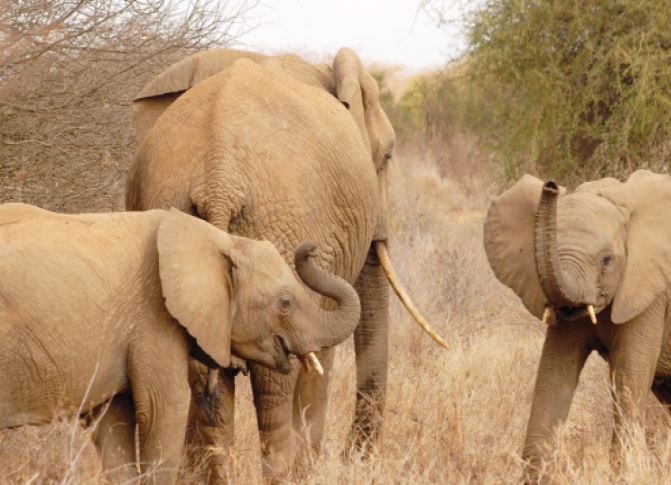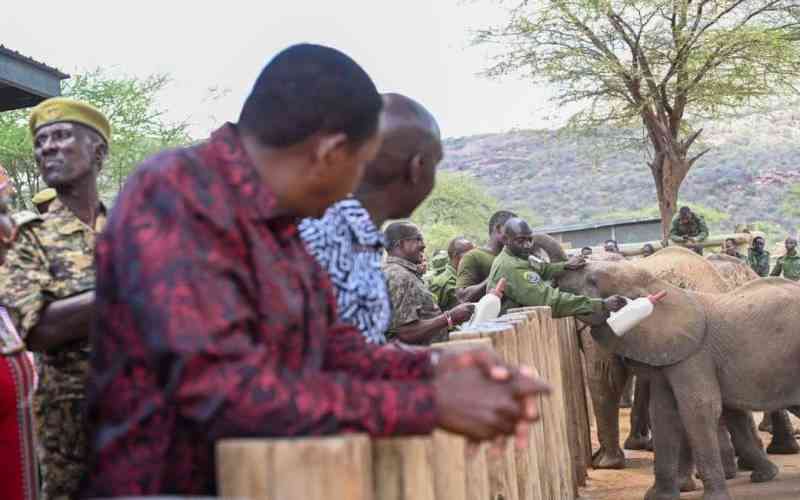
“Selenkay? What exactly is Selenkay?” I asked Jeremiah, my new friend and ‘safari guide’. “Oh, that is a 15,000-acre piece of African jungle set aside for wildlife conservation just outside of Amboseli National Park,” he replied. I have been to Amboseli more times than I can count. It is one of the most accessible parks as you don’t even need a four-wheeler to get by. But Selenkay? I never knew such a vast conservation existed next to Amboseli.
And so on a Thursday morning, I arranged with Jeremiah to go check out Selenkay. It was a quick hop from Wilson to Selenkay, 30 minutes to be precise on a Yellow Wings Cessna Caravan. After days of chilly weather and intermittent rains in Nairobi, an escape to the scorched grounds of Kajiado was irresistible. Eight in the morning and I was already having a game drive in some of Kenya’s untouched wilderness regions.
What a busy morning it was at Selenkay! The go-away bird (yes, that is her name), her dull grey plumage notwithstanding kept yelling at us at every turn. Like a noisy neighbour, her cries woke up the rest of the forest dwellers who found little comfort in the somewhat chilly, early morning weather. On a dry patch nearby, a lilac-breasted roller dusted herself, soiling her multi-coloured feathers. Hopping from shrub to shrub was a white headed buffalo weaver, giving us little time to snap away. Despite my newfound love for matters ornithology, I was looking for more than just the feathered friends. Big game, I learnt, was one of the reasons the conservancy was set up in the first place.
With the ease of a veteran, Julius made some tight maneuvers of the open-sided tour van, keen to avoid getting trapped by the low-hanging acacia branches. Together with Wilson, a jovial guide whose knowledge of the terrain is unmatched, we were on the trail of an elephant herd in the vast wilderness in southeastern Kenya. The trick was simple; follow the trails of freshly broken branches strewn over the place. To get the soft shoots and chew on the juicy bark, elephants engage in what one may term as environmentally destructive behaviour, breaking one tree after another. Nature, they say, has its way of restoring itself.
We drove over the overgrowth. There was fresh dung here and there but no signs of the beasts. We could hear the sound of another tree going down but no sight of the culprits. That was until we came to a clearing half the size of a football field where an entire family congregated – mothers, fathers and young ones – over 50 elephants in total. Startled briefly but our rude intrusion, they froze. We froze too. We were a breath away from some of the world’s biggest land mammals that needed little provocation to attack. Sitting in an open-sided vehicle surrounded by tonnes of unpredictable beasts was nerve-wrenching but awe inspiring too. “Animals rarely attack unless provoked,” said Wilson, clicking away casually with his phone camera as Julius switched off the engine. Wilson could as well have talking to the deaf. More surprises were to come. Driving a little further, we met ‘Umoja,’ a big bull scratching his back against an acacia a few metres from our car. He seemed to know the two occupants of the vehicle – Julius and Wilson. I was the stranger but he kept his cool. Later in the day, Umoja gave us a treat by passing directly in front of the car though there was plenty of room where he could have passed. It was a surreal sight.
We decided to take a break at the nearby Porini Amboseli Camp, a 10-tent affair that has retained the old Safari camp flair. I sat at a table under a canopy as two ground squirrels entertained me with their comical antics. Some light lunch and a cold drink later and it was time for a quick nap before a brief visit to a nearby Maasai boma where young morans displayed their legendary jumping skills. Here, I was taught how to make a fire the Maasai way by rubbing a stick against another flat piece of dry wood while using donkey dung as a catalyst.
But this Maasai village is special in another way. Some of the families who live in the boma are among those that were convinced by one Jake Grieves-Cook in 1997 to sign up their land for this community conservancy that has become one of the bastions for wildlife conservation in Kenya. Here, tourism footprint is kept at a bare minimum, as conservation takes the upper hand. As Wilson says, animals here feel much safer than their cousins in other protected areas where tourism numbers are becoming unsustainable. For the local Maasai, the success of Selenkay means more children in school, food on the table and some money in the pocket.
 The Standard Group Plc is a
multi-media organization with investments in media platforms spanning newspaper
print operations, television, radio broadcasting, digital and online services. The
Standard Group is recognized as a leading multi-media house in Kenya with a key
influence in matters of national and international interest.
The Standard Group Plc is a
multi-media organization with investments in media platforms spanning newspaper
print operations, television, radio broadcasting, digital and online services. The
Standard Group is recognized as a leading multi-media house in Kenya with a key
influence in matters of national and international interest.
 The Standard Group Plc is a
multi-media organization with investments in media platforms spanning newspaper
print operations, television, radio broadcasting, digital and online services. The
Standard Group is recognized as a leading multi-media house in Kenya with a key
influence in matters of national and international interest.
The Standard Group Plc is a
multi-media organization with investments in media platforms spanning newspaper
print operations, television, radio broadcasting, digital and online services. The
Standard Group is recognized as a leading multi-media house in Kenya with a key
influence in matters of national and international interest.









